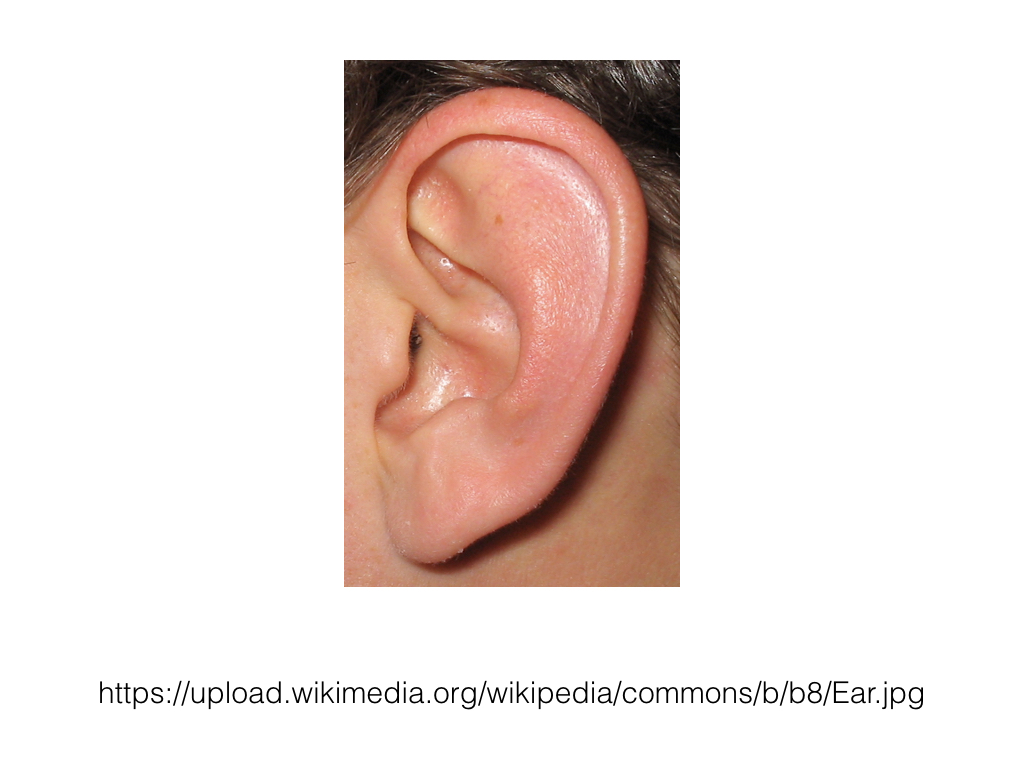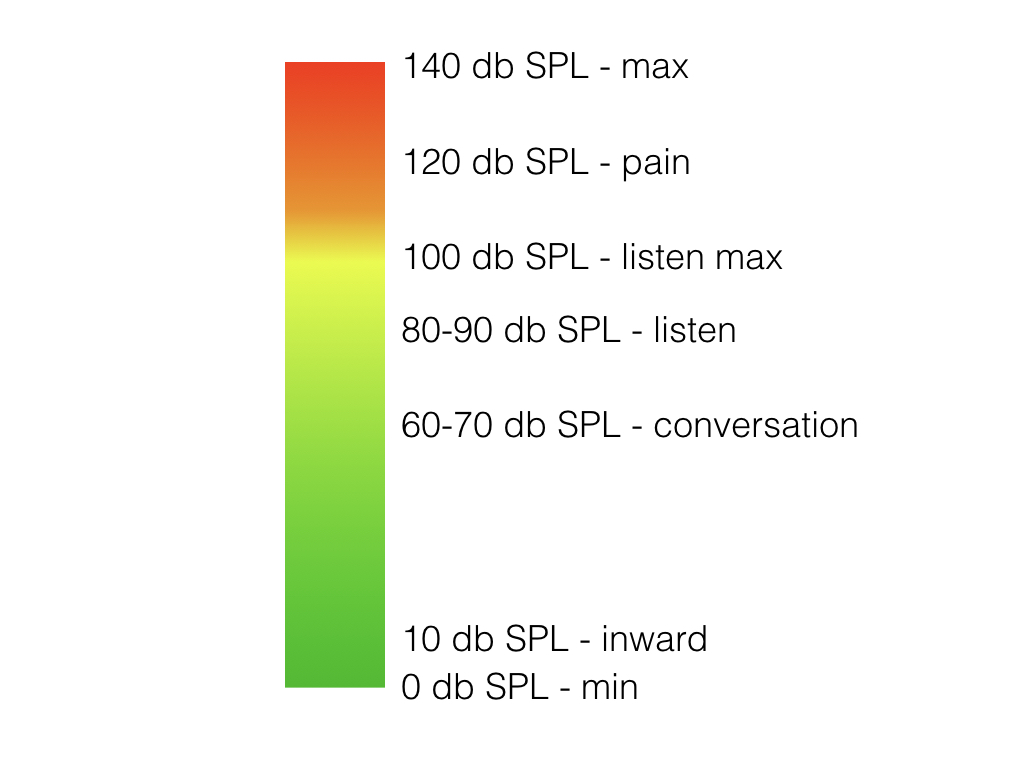In this unit, I'll discuss the physical capabilities of the human hearing system in regards to the five basic parameters of sound: amplitude, frequency, duration, phase, and spectrum.
Our hearing ability is very sensitive. In many ways, our hearing has the largest range of perception of any of our senses.

As we age, our hearing ability declines. Protect your hearing by listening at lower volumes, taking frequent breaks from loud sounds, and use ear plugs in loud environments.
Amplitude
Because decibel is a relative measure, we talk about decibels in normal earth sound pressure levels, or "dBspl". We can perceive sounds from 0 dBspl to 140 dBspl. Anything above 120 dBspl will cause pain. You should avoid listening to anything over 100 dBspl for more than 15 minutes, as the sound may cause hearing damage. Recommended levels for music listening and mixing are usually 80 to 90 dBspl. Conversational speech is 60 to 70 dBspl. Below 10 dBspl, and our hearing will turn inward, causing us to hear our own heartbeat and breath.

Frequency
Most commonly you will hear the frequency range of human hearing is 20 Hz to 20,000 Hz, or 20 kHz. In reality, the upper part of the range is different with each person. Anything over 15 kHz is difficult for us to perceive. Our perception of frequency is not linear. We perceive 20-40 Hz as the same size as 10-20 kHz! We can separate human hearing into 10 "octaves". Our hearing is the most sensitive between 1.5 kHz and 5 kHz, which corresponds with the most important parts of human speech. We do not perceive frequencies evenly. In an upcoming unit, we'll discuss how our sensitivity varies over frequency in amplitude.

Duration
In terms of duration, we can perceive anything over 35 milliseconds in length. Under 35 milliseconds, and while we will still hear the sound, we likely won't notice the sound. Duration and rhythm are the most innate part of music to humans. We use rhythm in our heart beat, breathing, sleep, motor movement, as well as social coordination.
Space
We use many cues to determine the location of a sound. The overall volume of a sound helps us to determine how close or how far a sound is. Also, sounds further away have reduced high-frequency content. We use the comparative amplitude between our two ears to determine the direction of the sound. Also, a sound reaching one ear slightly faster than the other informs our sense of direction. If a sound moves towards us or away from us, our perception of the pitch of the sound changes over that movement, also known as the Doppler effect. While we are excellent at perceiving distance and side-to-side, we have some difficulty with forward-and-back, and the most difficult axis is above-and-below.